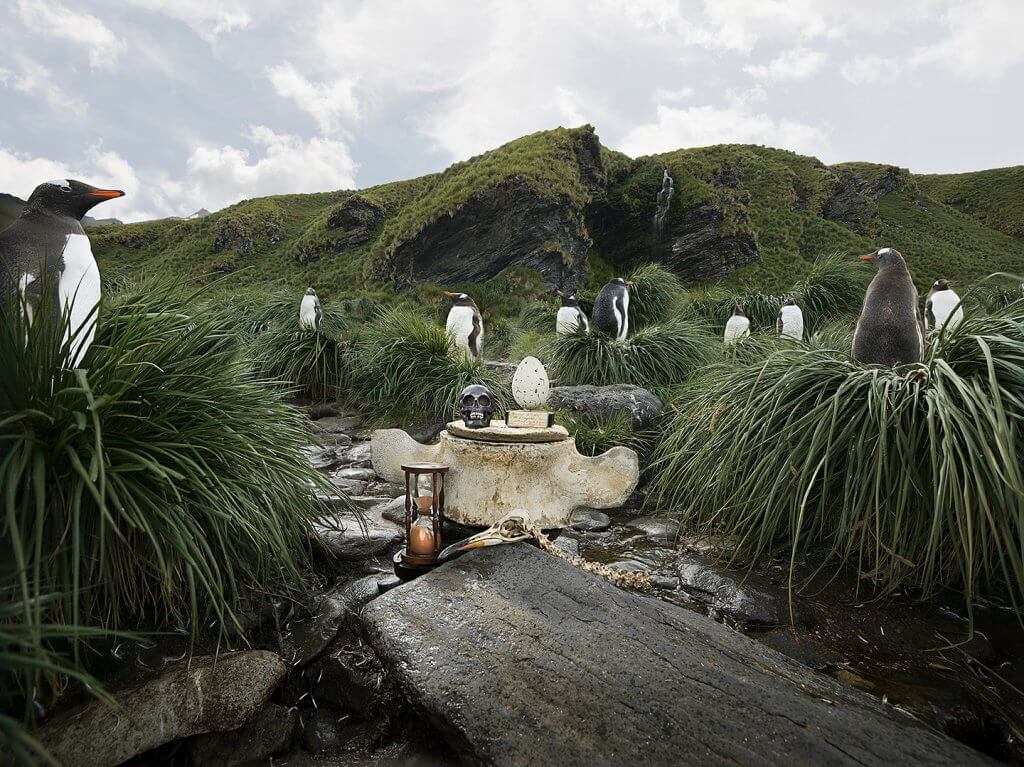Photo series displays wildlife alongside symbols of mortality—illustrating the urgency of climate change
Environmental artist Anne de Carbuccia’s ongoing series “One Planet One Future” uses photography, film, and art installations to highlight human-caused threats to the planet, including water scarcity, species extinction, and pollution.
De Carbuccia’s TimeShrines are modern-day memento moris—a medieval theory and practice of reflection on mortality, and the vanity of earthly life. Her images incorporate traditional ‘vanitas’ symbols, like skulls and hourglasses, presented alongside nature. The striking compositions aim to remind us of our time on this earth, and the impact we have.

According to de Carbuccia, “The vanity, the skull, is not a symbol of death, but a reminder that we are all mortal and should spend the precious time we have on the planet on positive and constructive accomplishments. There is no death in the vanity, just choice. You look at the vanity and you stop wasting your time. It’s one of the most positive symbols ever created.”
Since 2013, the French-American photographer has traveled to over 35 countries. Her work centers on four principle themes: Water, endangered species, endangered environments, and endangered cultures.

De Carbuccia built her first shrine by Lake Powell—an ancient Navajo site in Arizona—and highlighted the impact of drought: Water lines are clearly visible on the canyon walls in the photograph’s background. In Laos, she illustrated the devastation of the Vietnam War by including bullets, grenades, and bombs in the shrine. De Carbuccia also chooses to feature animals whose populations are declining, like tigers in Cambodia, bees in Italy, and elephants in Thailand.
The artist hopes the series will spread the awareness of climate change and foster informed discussion: “I wish to illuminate the damage, the breakage, the fragmentation. Somehow, if I can make it beautiful, I can make it one again.”

De Carbuccia’s work is permanently on display in two cities: The New York exhibition is located in the historic Westbeth Arts Center and the Milan exhibition is shown in a sustainably-renovated warehouse in Lambrate.

